The spotted lanternfly (Lycorma delicatula) is an exotic insect that was accidentally introduced into the United States and first detected about five years ago (Photo 1). It is native to Asia, feeds on a broad range of woody plant species, and could become a threat to our nation's forests, orchards and nurseries. Most notably, the spotted lanternfly has been found feeding on fruit trees, grape vines, hops, hardwoods and other woody landscape ornamentals. It's a spectacularly invasive insect that leaves a huge mess wherever it goes (Photo 2).
by Jeremy Jubenville
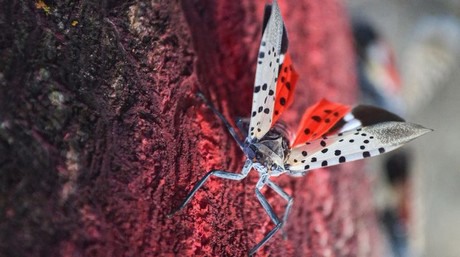
Photo 1. A spotted lanternfly adult on a tree in Pennsylvania. Photo by USDA APHIS (Tanya Espinosa).
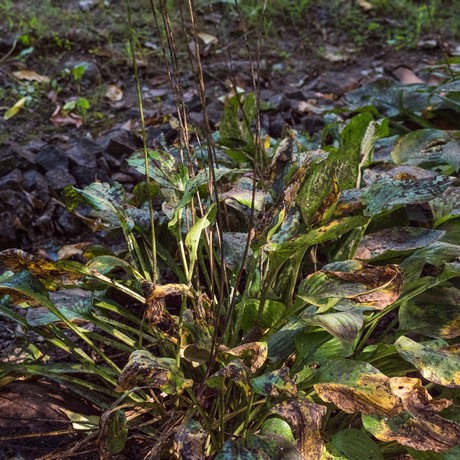
Photo 2. Spotted lanternflies excrete excess dietary sugar which falls to the ground and promotes mold growth. In addition to the mold on the Hosta, note the black sooty color of the rocks in the background. Photo by USDA APHIS (Lance Cheung).
Spotted lanternflies were first found in Berks County, Pennsylvania, in 2014 and have since spread to 13 nearby counties as well as a few locations in neighboring states. Their rapid spread has been attributed in some part to their ability to fly, but primarily to the unintentional transportation of infested objects across state or county lines. While adults and immature lanternflies will crawl onto vehicles (Photo 3), the egg stage is where they get downright sneaky.
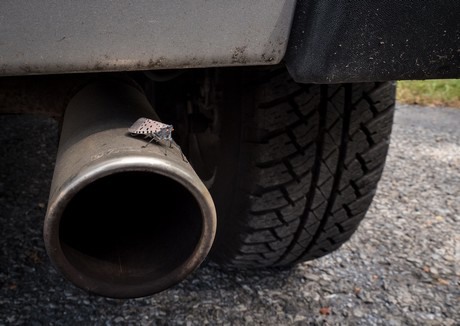
Photo 3. Adult lanternflies will crawl onto vehicles and hitch a ride. Photo by USDA APHIS (Lance Cheung).
Females lay a mass of eggs and then cover them with a protective coating that looks like a splotch of mud (Photo 4). You could easily walk by an egg mass in plain sight and not even notice it. In short, they are masterful hitchhikers and because of this, the United States Department of Agriculture (USDA) considers most states at risk for invasion.
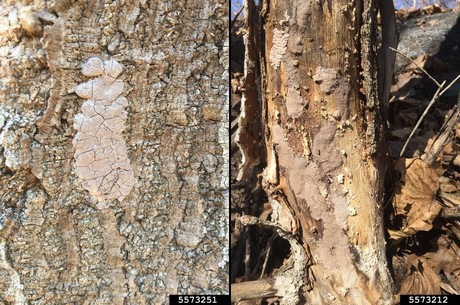
Photo 4. Egg masses of the spotted lanternfly look like splotches of mud. Photos by Emily Swackhamer, Penn State University, Bugwood.org.
Boots on the ground
State and federal agencies are devoting a lot of time and resources to controlling the spread of the spotted lanternfly. A wide range of plant-related industries have been working with these agencies to implement practical prevention, inspection and management procedures (Photo 5). Extension professionals in Pennsylvania and other states are providing a tremendous amount of information about the biology and impact of this new invader.

Photo 5. Vigilance is the name of the game to keep the spotted lanternfly within quarantine areas. Photos by USDA APHIS (Lance Cheung).
Despite outreach efforts and inspections, it's not difficult to envision a scenario where an egg mass laid in some narrow crevice evades detection and is transported across the region. While many highly-skilled people are working very hard to contain the lanternflies (Photo 6), they can't do it alone.
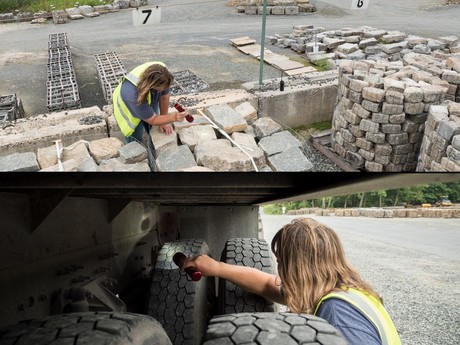
Photo 6. An inspector examines goods, containers and trucks leaving a landscape and building stone supplier in the Pennsylvania quarantine zone. Photos by USDA APHIS (Lance Cheung).
Here are two simple things we can all do to help:
- Learn to recognize the spotted lanternfly life stages.
- Inspect any items or vehicles that have travelled from or through Pennsylvania and other quarantine areas for hitchhikers. Here’s a good checklist to stopping the spread of spotted lanternfly.
Items that are at a high risk for bearing lanternfly egg masses are those that are stored outside for extended periods of time. In the green industry, some of those things might be:
- Carts
- Pallets
- Plastic containers
- Bales of growing media
- Loads of fertilizer
- Rocks and stones
- Hardscape materials
- Vehicles
You can readily find many of these items sitting outside almost any commercial greenhouse, nursery or landscaping operation in the summer and autumn months. Carts and pallets, in particular, move between states on a regular basis and should be inspected upon arrival.
Source: Michigan State University
